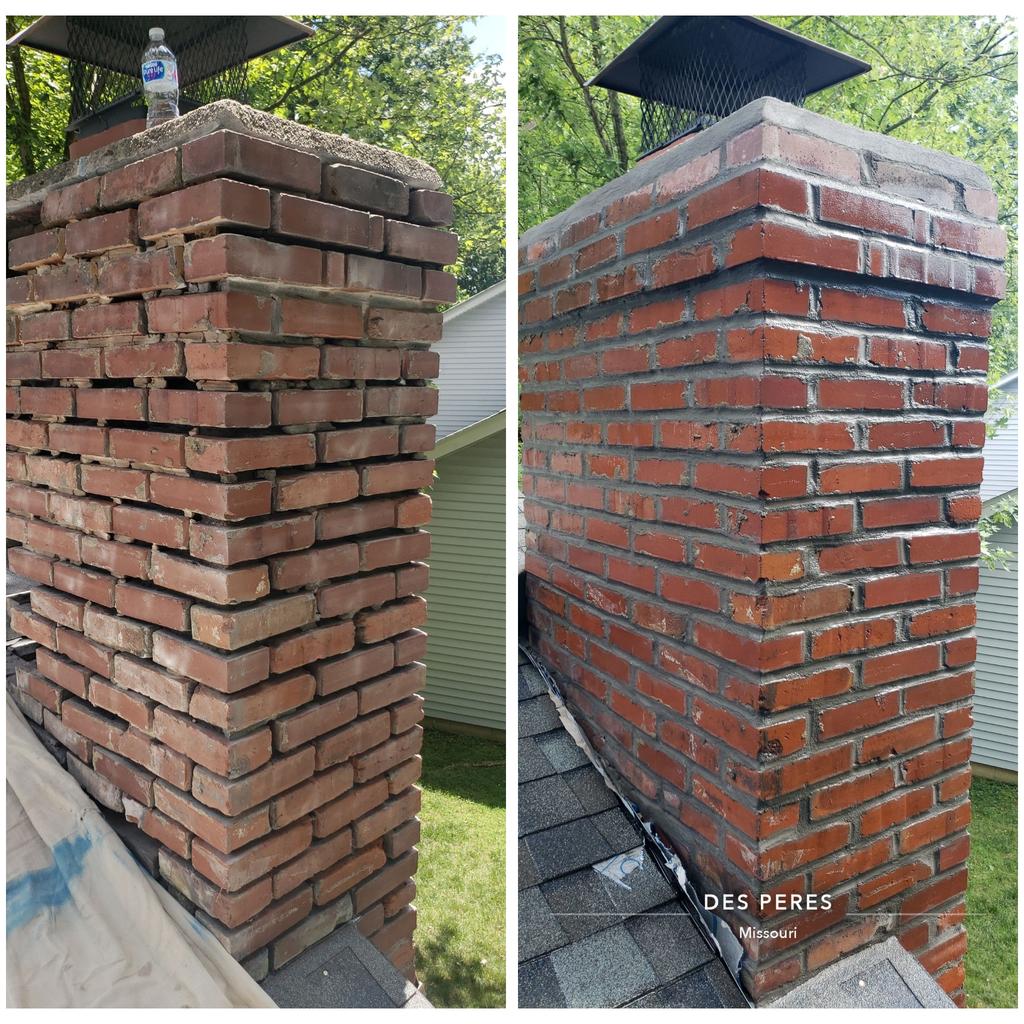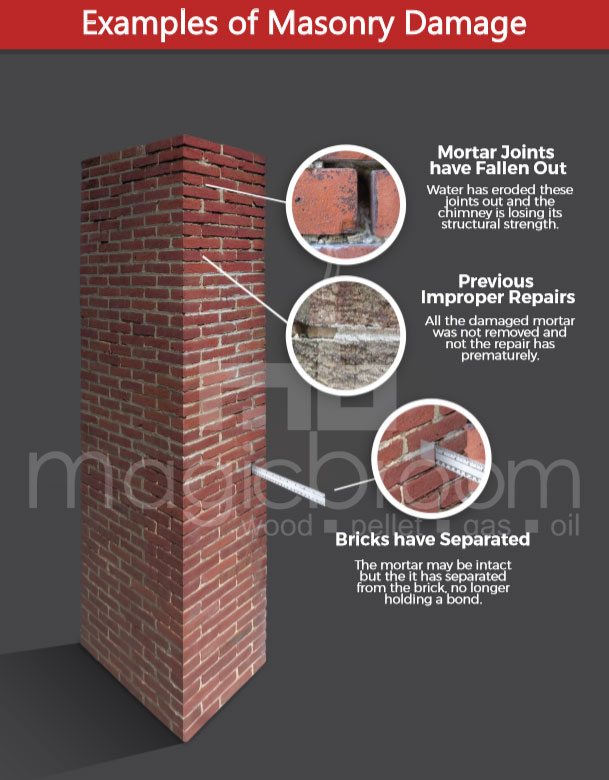Raul's Tuckpointing St. Louis MO: Transforming Buildings with Accuracy Stonework Repair
Raul's Tuckpointing St. Louis MO: Transforming Buildings with Accuracy Stonework Repair
Blog Article
Boost the Elegance and Resilience of Your Brickwork With Tuckpointing
Brickwork has long been esteemed for its classic beauty and sturdiness. Over time, the mortar that holds those blocks together can weaken, leaving your framework at risk to harm and detracting from its aesthetic charm. However worry not, for there is a solution that can restore both the charm and sturdiness of your brickwork: tuckpointing. This age-old technique not only improves the visual charm of your brickwork, however likewise strengthens its architectural honesty. What exactly is tuckpointing and just how does it vary from repointing? And exactly how can you make sure that your tuckpointed brickwork remains in excellent condition? In this discussion, we will check out the essentials of tuckpointing, its advantages, the distinction in between tuckpointing and repointing, the procedure itself, and the vital techniques for keeping and caring for tuckpointed brickwork.
The Essentials of Tuckpointing
Tuckpointing is a skilled technique made use of to enhance the look and repair and architectural stability of brickwork. It involves the procedure of eliminating tatty mortar joints and changing them with fresh mortar. The term "tuckpointing" refers to the technique of utilizing 2 different shades of mortar to create the illusion of fine joints, giving the brickwork a much more refined and cosmetically pleasing appearance.
The very first step in tuckpointing is to carefully analyze the condition of the brickwork. This includes checking the mortar joints for indications of deterioration, such as splitting, crumbling, or missing out on mortar. Once the issue locations have been recognized, the old mortar is meticulously eliminated using specialized tools, such as a mill or carve, while making sure that the blocks themselves continue to be intact.
After the old mortar has actually been eliminated, the next action is to prepare the joints for fresh mortar. This generally involves clearing out any debris or loosened product and wetting the joints to make sure correct adhesion. An experienced tuckpointer utilizes a directing trowel to meticulously fill the joints with fresh mortar, making sure to develop a flush and uniform surface.
Benefits of Tuckpointing
Improving both the longevity and look of brickwork, tuckpointing deals several significant advantages for home owners and home owners alike. By replacing deteriorated mortar joints, tuckpointing protects against moisture from seeping right into the brickwork, which can lead to architectural damage over time.
Another advantage of tuckpointing is its capability to improve the aesthetic allure of block structures. In time, mortar joints can become fractured, discolored, or stained, taking away from the total look of the brickwork. Tuckpointing includes thoroughly eliminating the harmed mortar and changing it with fresh mortar of a different color. This strategy permits the development of tidy, crisp lines that give the illusion of well-kept brickwork. It can additionally be used to develop ornamental patterns or layouts, better improving the aesthetic charm of the framework (Raul's Tuckpointing St. Louis MO).
In addition to boosting the durability and look of brickwork, tuckpointing can also boost the value of a residential or commercial property. Well-maintained brickwork is seen as a preferable feature by prospective customers and can dramatically improve the curb charm of a property. This can cause a greater marketing cost and a quicker sale when the moment comes to put the residential or commercial property on the market.
Tuckpointing Vs. Repointing: What's the Difference?

To compare tuckpointing and repointing, it is essential to comprehend the essential differences between these two methods of brickwork restoration. While both strategies intend to preserve the architectural stability and aesthetic charm of brickwork, they differ in their strategy and implementation.
Tuckpointing is a meticulous procedure that entails using 2 various shades of mortar to produce the illusion of fine joints. helpful hints This method is mostly utilized to enhance the aesthetic charm of brickwork by creating the appearance of well-crafted and properly maintained joints. The colored mortar is thoroughly applied and formed to match the shade and account of the original mortar, giving the impact of precision and workmanship.
On the other hand, repointing is a more uncomplicated process that entails eliminating scrubby or broken mortar from the joints and replacing it with fresh mortar. The key goal of repointing is to recover the architectural integrity of the brickwork by guaranteeing proper bonding and sealing in between the bricks. Unlike tuckpointing, repointing does not involve making use of tinted mortar or the creation of an attractive effect.
The Refine of Tuckpointing
The application of two different colors of mortar to develop the illusion of great joints is a meticulous process recognized as tuckpointing. This method involves getting rid of scrubby mortar joints and changing them with new mortar to enhance the look and structural stability of the brickwork. The procedure of tuckpointing can be separated right into several steps.
First, the old mortar is meticulously removed utilizing specialized devices such as mills and chisels. It is crucial to get rid of the mortar to a sufficient deepness to make certain a strong bond with the new mortar.
Next, the joints are extensively cleansed to remove any type of particles or dirt. This assists to develop a tidy surface area for the new mortar to abide by.
As soon as the joints are cleaned up, a thin layer of brand-new mortar is applied to the joint utilizing a tiny directing trowel. This first layer, referred to as the "pointing up" mortar, is typically the same color as the existing mortar.
After the preliminary layer has actually been used, a 2nd layer of mortar is used in addition to it. This second layer, called the "fillet" mortar, is a various shade and is thoroughly shaped to develop the impression of a great joint.

Maintaining and Caring for Tuckpointed Brickwork
Once the tuckpointing procedure is completed, proper upkeep and care are vital to protect the enhanced elegance and longevity of the brickwork. This upkeep not only makes certain that the tuckpointed locations stay undamaged and practical but additionally aids to avoid any possible damage to the total structure.
One of the vital elements of preserving tuckpointed brickwork is normal cleaning. It is important to stay clear of making use of any harsh chemicals or unpleasant tools that can potentially damage the mortar or the bricks themselves.
Along with cleansing, it is vital to check the tuckpointed locations occasionally. This allows for the very early discovery of any indications of deterioration or damage. Any type of splits, loose mortar, or signs of water damage need to be resolved immediately to avoid additional wear and tear.
Furthermore, ensuring proper drain around the brickwork is important. Water merging or inappropriate water drainage can lead to moisture infiltration, which can compromise the mortar and trigger structural damages. Cleaning downspouts and rain gutters regularly and ensuring that they are correctly directed away from the brickwork can aid prevent these issues.
Lastly, it is recommended to seek advice from a specialist tuckpointing contractor for regular repair and maintenance. Their proficiency and experience can make certain that any necessary repair work are done correctly, maintaining the honesty and durability of the tuckpointed brickwork.
Final Thought
In verdict, tuckpointing is an important technique for boosting the appeal and longevity of brickwork. It provides numerous advantages, such as look at this now enhancing the architectural stability of the stonework and stopping moisture infiltration. Tuckpointing includes the elimination and replacement of deteriorated mortar, leading to a clean and consistent appearance. By appropriately maintaining and caring for tuckpointed brickwork, homeowners can guarantee its long life and continue to enjoy its get redirected here visual appeal.
It entails the procedure of getting rid of deteriorated mortar joints and changing them with fresh mortar. Raul's Tuckpointing St. Louis MO.After the old mortar has been removed, the next step is to prepare the joints for fresh mortar. Tuckpointing entails thoroughly eliminating the damaged mortar and changing it with fresh mortar of a contrasting color. The colored mortar is very carefully used and shaped to match the color and profile of the initial mortar, offering the impression of precision and craftsmanship

Report this page